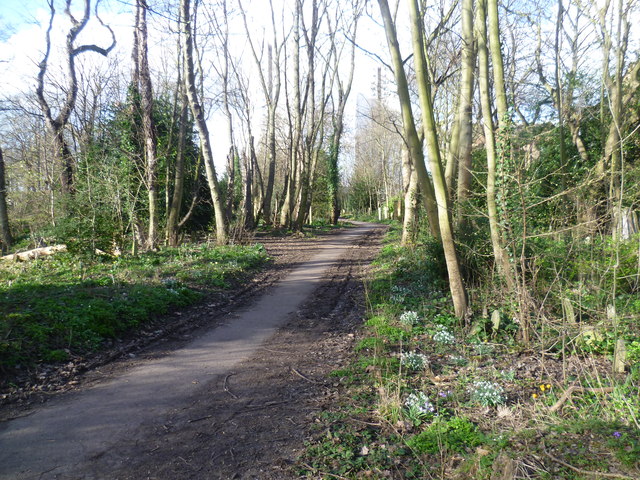Path in Tower Hamlets Cemetery Park
Introduction
The photograph on this page of Path in Tower Hamlets Cemetery Park by Marathon as part of the Geograph project.
The Geograph project started in 2005 with the aim of publishing, organising and preserving representative images for every square kilometre of Great Britain, Ireland and the Isle of Man.
There are currently over 7.5m images from over 14,400 individuals and you can help contribute to the project by visiting https://www.geograph.org.uk

Image: © Marathon Taken: 26 Feb 2014
Tower Hamlets Cemetery was built by the Victorians as a model necropolis in 1841. It was one of "The Magnificent Seven" cemeteries opened around that time to relieve pressure on London's overcrowded churchyards. The other six were Abney Park, Highgate, Kensal Green, Brompton, Norwood and Nunhead. It was consecrated on 4th September 1841, the date that the first interment was made. Tower Hamlets was initially a financial success and by 1889 some 250,000 bodies had been buried, the vast majority in common graves. Over the next 75 years the cemetery faced the same problem as many other Victorian cemeteries of increasing cost of maintenance coupled with reduced income from burials. By the time burials at Tower Hamlets ceased in 1966, when it was purchased by the Greater London Council, Ian Nairn was able to describe "Row after row of East Enders, jammed together....Around them, trees and shrubs as thick as the undergrowth in Epping Forest....stuffed to the gills with the remains of cockney mums and dads. ..the whole place could be in Cambodia or Yucatan." This is the only sizeable, established woodland in the Borough of Tower Hamlets. Over the last 25 years it has been developed as a cemetery park and now makes a fine nature reserve which is popular with local people.

